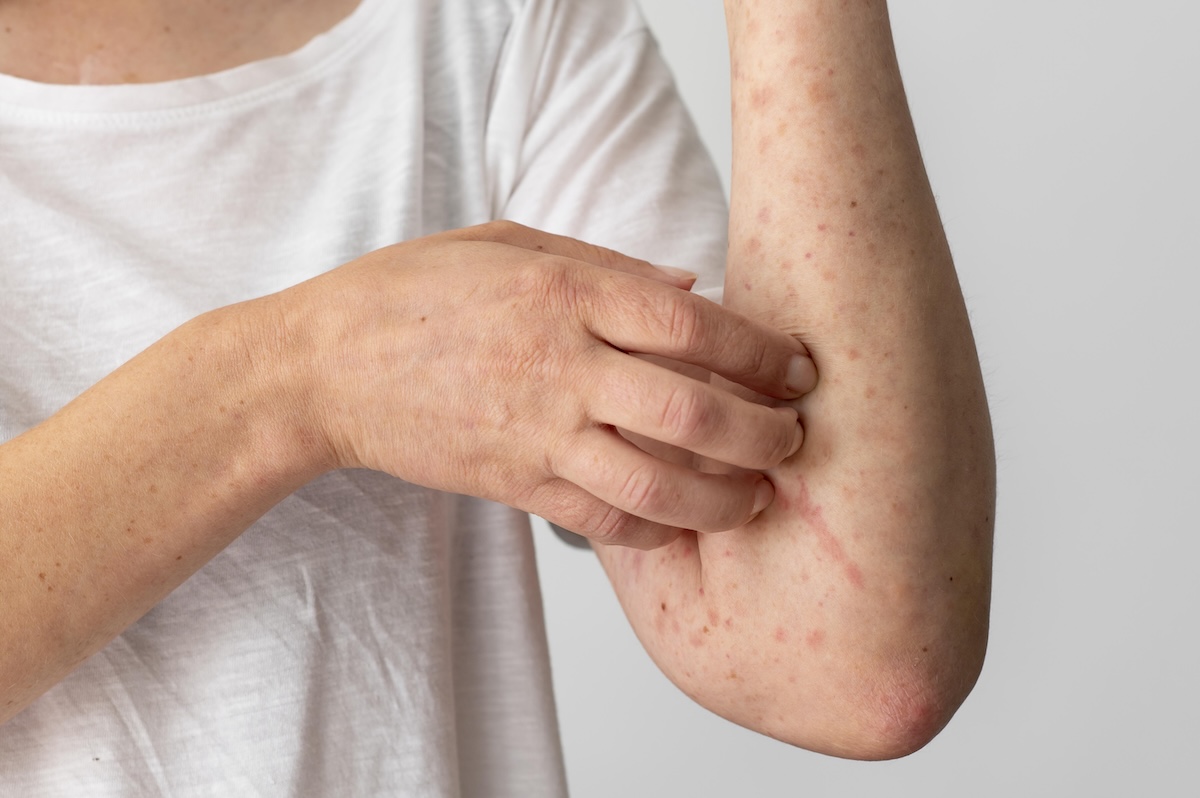Shingles is a painful skin condition that comes from the same virus that causes chickenpox. If you’ve ever had chickenpox—even many years ago—the virus doesn’t completely go away. It stays in your body and can reactivate later in life as shingles. While it’s more common in older adults, shingles can affect anyone who has had chickenpox.

Although shingles isn’t life-threatening, it can be extremely uncomfortable and even lead to complications if left untreated. The good news is that it can often be managed with medication, and there is a vaccine that can help prevent it altogether.
In this article, we’ll explain what shingles is, what causes it, the types and symptoms, how it’s diagnosed, and the treatments available to help you recover faster and feel better.
What Is Shingles?
Shingles, also known as herpes zoster, is a viral infection that causes a painful rash. It usually appears on one side of the body or face in a band-like pattern. This rash happens because the virus that causes chickenpox, called varicella-zoster, becomes active again after lying dormant in your nerve tissue for years.
When the virus reactivates, it travels along nerve pathways to the skin, causing a rash and nerve pain. The rash typically lasts 2 to 4 weeks, but some people continue to feel pain even after the rash is gone. This condition is called postherpetic neuralgia, and it can last for months or even years in more severe cases.
Shingles can’t be passed from one person to another. However, someone who has never had chickenpox or the chickenpox vaccine can catch chickenpox from someone with shingles if they come in direct contact with the fluid from the rash blisters.
Causes and Types of Shingles
The only people who can get shingles are those who’ve had chickenpox in the past. After the chickenpox infection clears, the varicella-zoster virus hides in the body, staying inactive in the nervous system. Years later, it can become active again. Doctors aren’t always sure why this happens, but they believe a weakened immune system plays a big role.
There are certain things that can increase your risk of getting shingles. These include:
-
Aging (especially over 50)
-
High levels of stress
-
Diseases that weaken the immune system, such as HIV or cancer
-
Medications like chemotherapy or long-term steroids
Shingles is typically classified by where it appears on the body. Most often, it shows up as a stripe of rash around the torso. In some cases, it affects the face or eyes, which is called ophthalmic shingles. This type needs fast medical treatment to prevent long-term damage to the eye. Shingles in the ear area, known as Ramsay Hunt syndrome, can cause facial weakness or hearing loss if not treated quickly.
Although these forms are less common, they can lead to serious health issues and require close medical follow-up.
Common Symptoms to Look For
Shingles often starts with pain or a burning feeling in one part of the body. This may happen a few days before any rash appears. The skin might feel sensitive to the touch, itchy, or like it’s tingling. Soon after, a red rash shows up, followed by clusters of fluid-filled blisters.
The rash usually appears on one side of the body or face and may look like a stripe or belt. These blisters eventually break open, dry out, and form crusts before they heal.
In addition to the rash, shingles can cause:
-
Headache
-
Fever and chills
-
Upset stomach or fatigue
-
Sensitivity to light
-
Muscle weakness if nerves are affected
Some people, especially older adults, experience nerve pain that continues even after the rash goes away. This is called postherpetic neuralgia and is one of the most common complications.
How Shingles Is Diagnosed
If you think you might have shingles, it’s important to see a healthcare provider right away. A doctor can usually diagnose shingles by looking at your rash and asking about your symptoms. Since the rash appears in a specific pattern, often along a single nerve line, it’s fairly easy to identify.
In some cases, especially when the rash isn’t typical or hasn’t fully developed, the doctor may take a sample of the fluid from a blister to test for the virus.
Early diagnosis is key. If you start treatment within 72 hours of the rash appearing, the medicine can work more effectively and reduce the chance of complications.
Treatment Options and Relief
While shingles can’t be cured, it can be treated to help shorten the illness and ease the symptoms. Antiviral medications are the most common treatment. These include drugs like acyclovir, valacyclovir, or famciclovir. They help stop the virus from multiplying and speed up healing.
The earlier you start these medications, the better they work—so don’t wait to call your doctor if you think you have shingles.
Pain relief is also an important part of treatment. Your doctor may recommend over-the-counter pain relievers like acetaminophen or ibuprofen. In some cases, prescription medicines, numbing creams, or even nerve pain treatments may be needed.
Cool compresses and loose clothing can also help ease discomfort while the rash heals. It’s also important to keep the rash clean and dry to prevent infection.
For people who are at higher risk, getting the shingles vaccine can lower the chances of developing shingles or reduce the severity if you do get it. The vaccine is recommended for adults over 50, even if they’ve had shingles before.
